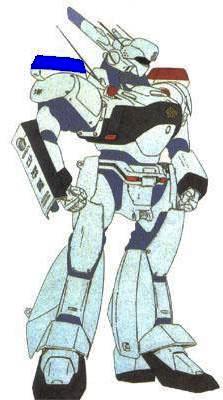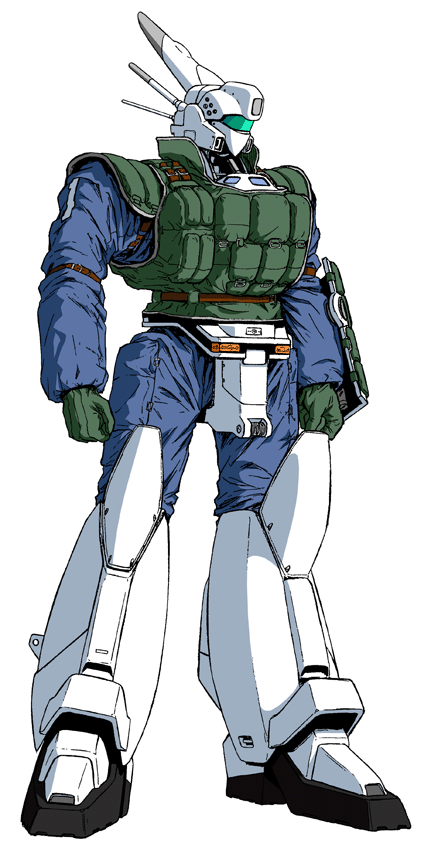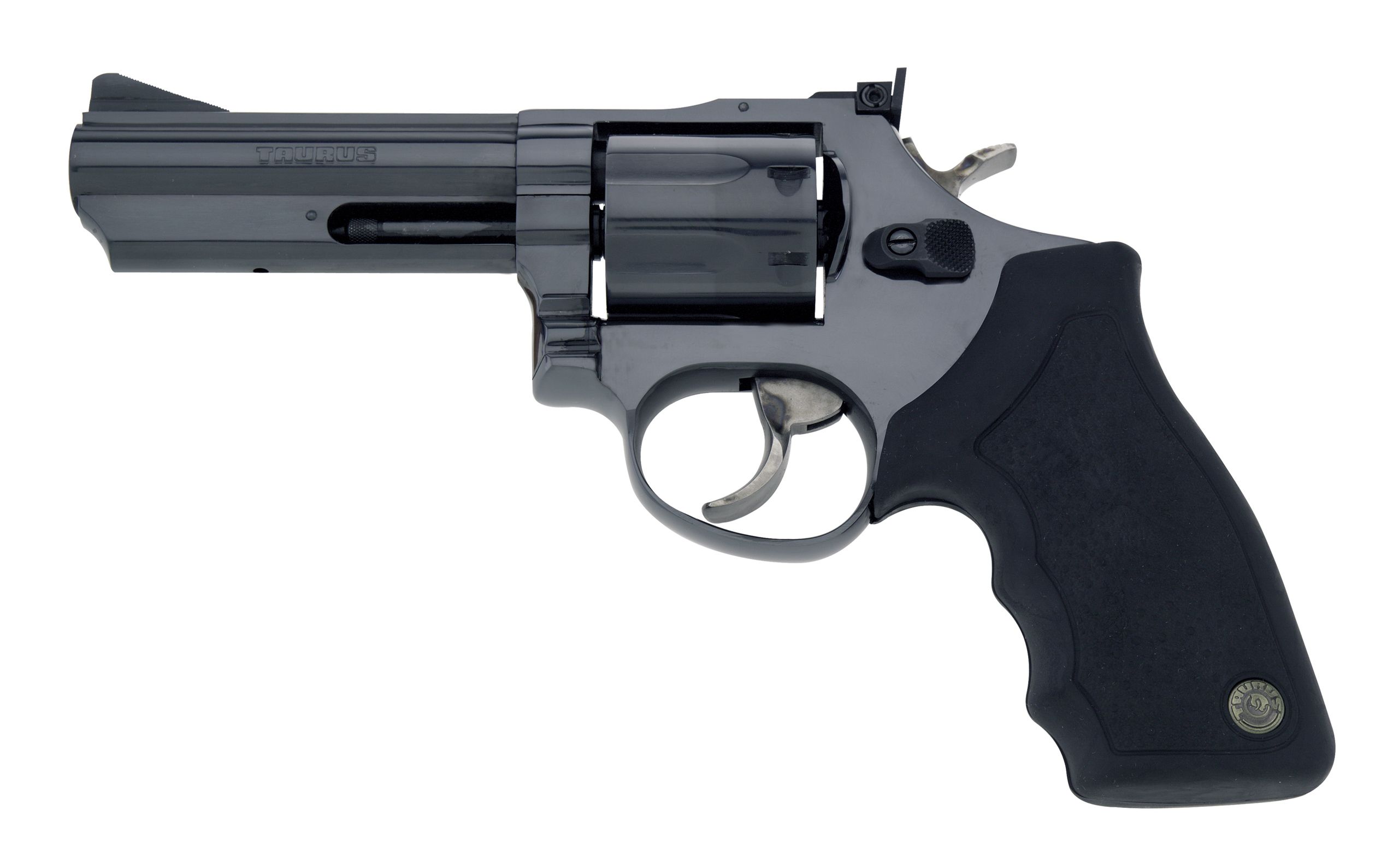
United Galaxies Council. | AV-98 Ingram
Police Destroid. | 
United Galaxies Council. |
|---|
With the advent of civilian robots, the criminal element found a new way to do business. The theory is simple, really; A new tool is a new tool, nothing more, nothing less. Unfortunately, Law Enforcement was  |  | | Standard Ingram Police Destroid. | Reactive Armor Equipped. |
|---|
forced to adapt with this new tool; This has been both a benefit and a liability. On the benefit side, the appearance of Police Mecha typically get all but the most recalcitrant troublemakers to think twice, then twice again. In the liability column, these tools are often blamed for collateral damage- Sometimes justifiably.Developed by Shinohara Heavy Industries, the Ingram was specifically built for the role as a patlabor. The advance technology used in the Ingrams put it at the top of not only the patlabors, but also all other categories of labors in existence. It was essentially the best labor possible, but at a cost only the government could afford. Used by the SV2's Second Section, the Ingram became so popular an economy version for the public was designed, but ultimately was a flop. The Ingram eventually became so well known that criminal organizations would design their labors with defeating the Ingram as a benchmark of their abilities. It should be noted that until recently in a stand-up fight, any Destroid could devastate a Police Mecha of any type; However, in numbers, Police Mecha "could" wear down a militry Destroid, a tactic that has been used on occasion (especially effective against normal Tiresian, Ator, and T'sentraedi Mecha). To effectively combat stolen militry Mecha and robots, the three AV-98 Ingram units were equipped with reactive body armor designed with explosives that dissipate energy from the impact of enemy fire. A 3D rear monitor was also installed on the back hip of each Ingram. It won't actually save the Ingrams; In fact, it doesn't really give them a fighting chance. It does, however, give them enough armor to delay an attack long enough for heavier reinforcements, such as RDF Mecha, to arrive- This was MOST pointedly demonstrated at the Battle of Nevies, where 12 Reactive Armor equipped Ingrams (supported by a wing of VF-1J's and a pair of S's) managed to stall an attacking ORGUSS force twice their (combined) size long enough for civilians to evacuate and the Norvesh RDF to deploy sufficient forces to smash the incursion- This is generally considered the single biggest victory against the Orguss to date, and produced enough parts for the UGC to finally build a full Orguss Squadron of it's own. Tiriesian malconts do like getting their hands on these when they can- In fact, of all the various malconts, Tiresians like them best, and REF Intel fears they may start making their own variant. The Ingram teams very well with the Police Destroid MkI and Police Veritech under all normal circumstances.It should be noted that the Ingram is NOT suitable, in general, for engaging rioting civilians; The Police Veritech and Police Destroid MkI are better suited to this.Name: AV-98 IngramModel Type: Police DestroidClass: DestroidManufacturer: Shinohara Heavy IndustriesCrew: One.Passengers: None.MDC By Location: |
Torso-
Head-
Upper Legs (2)-
Lower Legs (2)-
Feet (2)-
Upper Arms (2)-
Forearms (2)- | 300
150
200 each
150 each
100 each
100 each
80 each | Forearm Shields (2)-
Type ⁵/56 Police Destroid Pistol-
Type 281 Police Destroid Riot Shotgun-
Hands (2)-
Power Pack (backpack)-
Thruster-
E-cables (up to 2)- | 50 each
80
100
50 each
200
150
100 each |
| Speed and Statistical Data: |
In Space: 1,450 mph
Range:.1 light year, but the pilot must wear a spacesuit or something, since the cockpit isn't sealed.
On The Ground: 90 MPH
Range: 20 hours.
In The Water: 12 knots; This is on par with a cargo ship.
Range: 20 hours.
Height: 26 feet, 4 inches
Width: 8 feet 2 inches
Length: 2 feet 6 inches | Weight: 6.62 Tons.
Cargo: Pilot supplies only; There are actually two sets, an upper compartment and lower, both with a complete set of supplies, including spare ammo and a riot shotgun (some departments still use variations on the old Fontain Heavy), food packets, etc- Everything an officer might need if they have to ditch their Mecha or climb out to effect an arrest (though this is rare, since it exposes the Mecha to being stolen or worse).
Power System: JJM-222 Hydrogen Fuel Cell Engines
Cost and Availability: 50,000credit; Regularly available.
Black Market Cost and Availability: 5,000 to a half millioncredit; Routinely available. |
| Weapons Systems |
|---|
1. Battle Mace: This RDF hold out continues in service due mostly to its simplicity; A battle mace can be  fashioned out of almost any type of vaguely dowel metal, cut to right length. The MB-4 comes with the robot from the factory; Black and grey market sales occasionally lack this element. fashioned out of almost any type of vaguely dowel metal, cut to right length. The MB-4 comes with the robot from the factory; Black and grey market sales occasionally lack this element.
Purpose: Defense
M.D.: 3D6 per blow
Attacks per Melee: Per pilots.
Range: Reach plus 4 to 10 feet.
Payload: Not applicable.
Replacement Cost and Availability: 15,000credit; Always available.
Black Market Cost and Availability: Not applicable.
2. Stunner Plates: During the Persius Ghetto riots, a precursor design to the Ingram was deployed in large numbers. The deployment of the original police Destroids aggravated the crowd, and they rushed them; Much to everyone's surprise, they were, actually, pretty easy to knock down, and once down, the pilots were totally exposed; Of the 30-odd overwhelmed, 25 of the police officers were murdered.
With this in mind, the Ingram series were rigged with close-range anti-personnel weapons. At first, command detonated Cobalt Mines were considered; However, the deadly nature turned many in legal (not law enforcement) circles against them, and the less-than-lethal stunner plates were installed instead. They work really simple; The pilot throws a switch, if you touch the Mecha you get zapped; If you're stupid enough to keep holding on, you can be zapped to death. Pilots can also shut down specific plates, in the event someone gets stuck to the panel somehow. The system, however, was tested using FULL SIZED T'sentraedi volunteers, and toughest one could only hold on for a few seconds before her hand was knocked further away than the total height of the Mecha; One volunteer was actually knocked 20 feet away. (On the other hand, the First one stated quite clearly she wasn't going for a second round; The other one mentioned went back three times.)
Purpose: Anti-Personnel.
Damage: 5D6 per jolt; Also has a 85% chance of leaving the victim stunned, but conscious, for 1D4 melees.
Rate of Fire: Single shot (per pilots attacks per melee).
Range: Self/Touch.
Payload: Unlimited.
Cost and Availability: 2,000credit; Always available.
Black Market Cost and Availability: Same. | 3. Type 5/56 Police Destroid Pistol: Due to the reliability of ammo supplies, the decision to switch police Destroids from laser to propellant based weapons wasn't hard; The refinement of Plasma-662 provided the last little impetus to do so. The 5/56 Police Destroid Pistol has also seen limited use in the REF and  GSA. GSA.
Purpose: Defense/Anti-Robot
M.D.: 1D4 per individual shot or 5D6 per 5 round burst.
Rate of Fire: Per pilots attacks per melee.
Range: 200 feet
Payload: Each clip carries 100 rounds (20 bursts); Each robot is designed to carry 4 spare clips. Additionally, the black market sometimes has expanded clips, ranging from 150 to 500 rounds.
Cost and Availability: 20,000credit
Ammo Cost and Availability: A crate of 500 rounds costs 50,000credit; Always available.
Black Market Cost and Availability: 20,000 to 1 millioncredit; Routinely available.
Black Market Ammo Cost and Availability: A crate of 500 rounds costs an average of a half-millioncredit; Always available.
4. Type 281 Police Destroid Shotgun: The Type 281 was actually developed for the RDF Gladiator Destroid and Veritech Fighter; However, the weapon wasn't found to meet RDF needs and was disregarded. The advent of Mecha-equipped galactic malcontents, however, has changed this, and the weapon is being produced on almost every civilized  world. world.
Purpose: Anti-Armor
M.D.: 5D6 per blast
Rate of Fire: Single shot (per pilots attacks per melee).
Range: 250 feet
Payload: The gun can hold up to 200 rounds in it's tubular magazine; Reloading the magazine takes 1 minute per 10 rounds in the field, or 1 minute with a reloading machine.
Cost and Availability: 250,000credit
Ammo Cost and Availability: A crate of 2,000 rounds costs 100,000credit and is ALWAYS available.
Black Market Cost and Availability: 20,000 to 5 millioncredit
Black Market Ammo Cost and Availability: A crate of 2,000 rounds costs 100,000credit and is ALWAYS available. |
| Features:The Ingram is a bit lighter on some features, mostly those of pure militry applications. However, Anit-Missile Chaff/Flare Dispensers and other decoy systems can be installed with a kit. |
- Radar: Combat grade radar. Range: 200 miles, can track up to 250 individual targets. 95% reliability (24% against unfriendly stealthed vehicles).
- E.S.M.: Radar Detector. Passively detects other radars being operated.
- A.J.P.: Active Jamming Pod. Causes -25% to detection but when it is active, other vehicles/bases can detect that it is jamming, and some missiles will home in on jamming signals. Jamming also causes a -4 penalty to all radar guided weapons.
- Anti-Jamming System: Reduces Electronics Countermeasure by 3/4 (decrease skill level appropriately).
- Full Range Sensory Suite: Infrared, ultra violet, Magnification, night sight, color filters, thermal imager. Range is about 2,000 miles for MOST sensors.
- Type-11 wide band radios: Effective 10 mile range, auto encrypt/decrypt. Works on standard radio band wavelengths, so it can still be jammed (if the enemy knows the frequencies).
- Loudspeaker: Amplifies voice 1 to 100 times. 100' in normal crowds.
- Smoke Emitters (2): Throws out smoke flares which emits enough smoke to cover an area about 20 cubic feet in calm weather; Special chemicals block IR sensors and radar signals (scatters them so the enemy can't get a good fix), however does not totally interfere with enemy sensors (enemy is -2 strike). Note: The smoke can be replaced by ANY chemical agent, from tear gas and pepper sprays to "Dragon's Breath", a noxious chemical that produces a smell so foul it's been known to cause people to visit the hospital, but is really quite harmless.
- Combat/Targeting Computer: Records all enemy and friendly activity over the course of time; Can replay that activity for the pilot, assign target designation numbers, and track likely damage based on mathematical formulas (i.e. "Right leg red" badly damaged/destroyed, "head green" not damaged, etc). Displays this information as a pop up in the HUD on request by the pilot. It can also track the status of other police in the area if their bio-monitor is on line.
- Electronic Counter Measures (ECM): These systems disrupt enemy radar and tracking systems, making it difficult for them to lock onto the ship with weapons. The countermeasures give the Mecha a +3 to dodge, +2 to strike and +1 on initiative in combat.
- CBR Protection: Complete chemical, biohaZard, and radiological protection.
- Motion Detector: Activates a loud wailing when an object is coming at the user fast, and a soft ringing if it's coming slowly. Activation ranges must be specified by the pilot.
- FLIR/SLIR: Forward and Side Looking Infrared. Allows pilot and weapons officer to get visuals on targets at night.
- Blue Force Tracker: Identifies Friend from Foe. Overlays the information on both the radar and HUD, ensuring that friendly forces are not accidentally targeted.
| - Mine Detector (in feet): Gives effective 85% Detect Mine/Trap OR increases skill by 10% for pilots that have that skill (whichever is more). Works on density composition, so non-metallic objects cant hide, and displays a visual assessment and danger probability (based on a mathematical formula) for the pilot on request.
- Video Recorder: Records from sensors and the cockpit itself. 500 hours of recording available.
- G.P.S.: Standard tracking device.
- H.U.D.: Displays maps, radar, targeting information, and any OTHER information the wearer wants directly in front of the user.
- Virtual Map: Displays a continuously-updating map of local terrain for the pilot. Effective land navigation of 85% as updates come. Good to 50 miles. Specific range can be adjusted in 1 mile increments.
- Survival Pack: A pack of simpler emergency survival supplies: Pup tent, sleeping bag, black light, G.P.S., First aid kit (bandages, gauZe, bandage tape, pads, antiseptic/analgesic), plasma torch (for small repairs and starting fires), repair kit (with MDC Repair Spray), sewing kit (a small spool of thread and 5 needles), 7 star flares (250' apogee), 2 white parachute flares (1,500' apogee), 100' of black or brown parachute cord (150 lbs tensile strength), 2-5 days rations, 2 gallons water, water purification kit- good for about 10 gallons.
- Internal temperature and humidity control: Automatically maintains users desired heat, humidity, and other personal comfort settings.
- Heat And Radiation Shielding: Special shielding prevents the penetration of life threatening heat and radiation.
- Variable Tint Cockpit Canopy: Adjusts tinting to light conditions, up to an including a black dot if the sun is directly on the pilots face (only covers eyes).
- XTNDR RADAR/Radio Antenna Extender: A simple, 2 3 foot helium balloon lofts a 10 lb. pod 100' into the air. Hanging from this payload is a fiber-optic cable that relays the data collected from the XTNDR Pod to the Mecha computers. Note that using this system under heavy foliage will allow the radar, etc to work there, at no penalties, but it will not break the canopy either.
- MDC By Location:
- Pod: 50
- Fiber Optic Cable: 10
- Effect: Extends range of any sensors 10 times (or defeats other penalties in a 5 mile area).
- FLIR/SLIR: Forward and Side Looking Infrared. Allows pilot and weapons officer to get visuals on targets at night.
|


 GSA.
GSA. world.
world.
